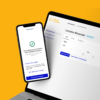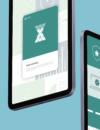
 Impact us today
Impact us today
Next case study
Impact us today
To accelerate sustainable renovations for houses, Impact Us Today connects homeowners to reliable contractors through energy transition partners. With many different user types, a platform like this quickly became complex and unscalable. Through research and redesign, we helped to simplify the UX for all users, keeping the essential functions while making sure all user needs are met in a smooth process.



